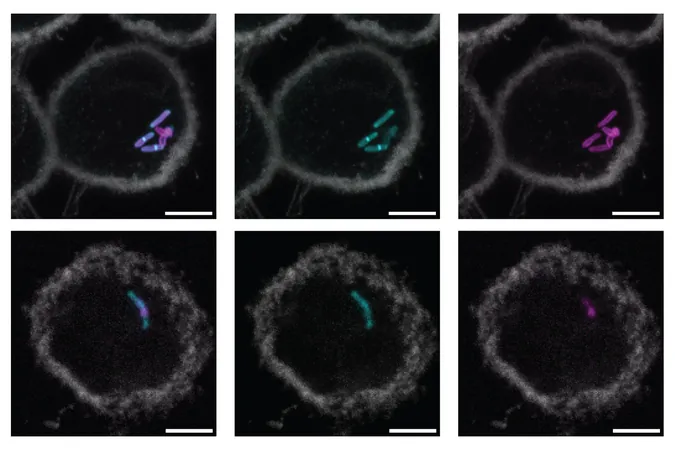
Revolutionary Molecular Labeling Technique Set to Transform Tuberculosis Testing
2025-05-05
Author: John Tan
A Deadly Challenge: Understanding Tuberculosis
Tuberculosis (TB) is a relentless global health crisis, infecting approximately 10 million people and claiming over a million lives each year. This tenacious pathogen, once it infiltrates the lungs, is shielded by an intricate cell wall designed to evade the host's immune defenses.
Unlocking the Secrets of Glycans
Central to this protective barrier are glycan molecules. However, their exact role in helping TB bacteria defend against immune responses has remained elusive—until now. Chemists from MIT have made significant strides by developing a way to label a specific glycan, known as ManLAM, using an innovative organic molecule that targets sulfur-containing sugars uniquely present in Mycobacterium tuberculosis.
Visualizing the Enemy: A Breakthrough in Research
With this new labeling technique, researchers are now able to trace the locations of glycans within TB's cell wall and observe their behavior during the initial stages of infection in immune cells. This breakthrough could pave the way for new diagnostic tests that identify TB-associated glycans more quickly and affordably, especially crucial for developing nations where conventional methods like sputum cultures are often unreliable.
Redefining Diagnostic Excellence
Current diagnostic options can be limited and time-consuming—often demanding weeks to confirm TB diagnoses. Dr. Laura Kiessling, the senior author of the study, emphasizes the urgent need for straightforward and rapid testing, particularly in populations such as children who struggle to provide traditional samples.
Revolutionary Testing on the Horizon
The promising research, led by graduate student Stephanie Smelyansky, reveals how glycans not only help TB bacteria invade host cells but also mask them from immune detection. By utilizing a compound called oxaziridine, the team successfully tagged ManLAM, allowing them to visualize this glycan’s behavior in real-time.
Understanding the Dynamics of TB Infection
In their investigations, the researchers discovered that ManLAM persists in the bacterial cell walls during the early days of infection, contrary to previous beliefs that it would be shed into the host. This insight could redefine how TB's infection mechanics are understood.
Looking Ahead: Groundbreaking Applications in Diagnostics
With plans to determine how TB bacteria interact with different antibiotics and immune responses, the researchers are gearing up to refine their labeling technique for use in enhanced diagnostics. The aim is to develop a more sensitive urine test that can detect ManLAM even in smaller quantities, potentially revolutionizing TB detection and treatment.
A Beacon of Hope Against a Global Scourge
As expressed by Todd Lowary, a distinguished researcher not involved in the study, this innovative approach could inform the creation of new strategies to combat tuberculosis, which remains one of the world's most pressing health challenges. As the research advances, so does hope for more effective and accessible TB testing and treatment solutions.

 Brasil (PT)
Brasil (PT)
 Canada (EN)
Canada (EN)
 Chile (ES)
Chile (ES)
 Česko (CS)
Česko (CS)
 대한민국 (KO)
대한민국 (KO)
 España (ES)
España (ES)
 France (FR)
France (FR)
 Hong Kong (EN)
Hong Kong (EN)
 Italia (IT)
Italia (IT)
 日本 (JA)
日本 (JA)
 Magyarország (HU)
Magyarország (HU)
 Norge (NO)
Norge (NO)
 Polska (PL)
Polska (PL)
 Schweiz (DE)
Schweiz (DE)
 Singapore (EN)
Singapore (EN)
 Sverige (SV)
Sverige (SV)
 Suomi (FI)
Suomi (FI)
 Türkiye (TR)
Türkiye (TR)
 الإمارات العربية المتحدة (AR)
الإمارات العربية المتحدة (AR)